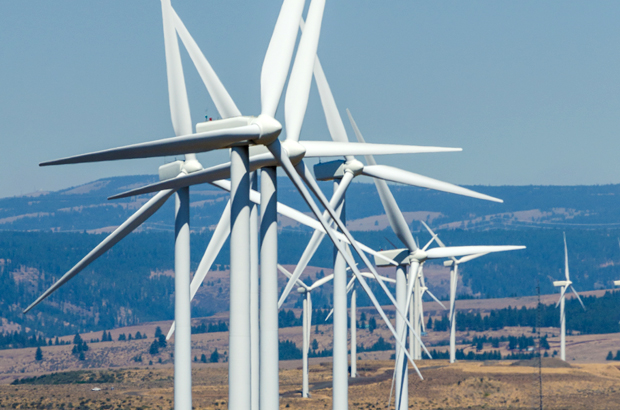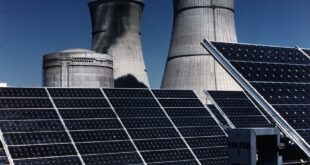Clean energy is a type of energy that comes from renewable resources and produces minimal pollution or greenhouse gas emissions. Clean energy sources include wind power, solar power, hydroelectric power, and geothermal power.
In recent years, the importance of clean energy has increased as people have become more aware of the harmful effects of traditional energy sources on the environment and human health. In this article, we will discuss what clean energy is, its different types, its advantages and disadvantages, and its importance for a sustainable future.
Types of Clean Energy:
Solar Energy:
Solar energy is obtained by capturing the energy emitted by the sun and converting it into electricity or heat. This energy can be used in a variety of ways, such as to power homes, businesses, and even cars. Solar panels are the most common way to capture solar energy, and they are becoming more affordable and accessible every year. The advantages of solar energy are that it is abundant, renewable, and does not produce any harmful emissions.

Wind Energy:
Wind energy is obtained by capturing the power of the wind and converting it into electricity. This is typically done using wind turbines, which have become increasingly popular in recent years due to their efficiency and cost-effectiveness. Wind energy is a clean and renewable source of energy that does not produce any greenhouse gas emissions or other harmful pollutants.

Hydroelectric Energy:
Hydroelectric energy is obtained by capturing the power of water and converting it into electricity. This is typically done by building dams on rivers or other bodies of water, which creates a reservoir of water that can be used to power turbines and generate electricity. Hydroelectric energy is a clean and renewable source of energy that does not produce any greenhouse gas emissions or other harmful pollutants.
Geothermal Energy:
Geothermal energy is obtained by harnessing the heat from the earth’s interior and converting it into electricity or heat. This is typically done by drilling deep into the earth’s crust and tapping into the hot water and steam that is naturally present. Geothermal energy is a clean and renewable source of energy that does not produce any greenhouse gas emissions or other harmful pollutants.
Advantages and Disadvantages of Clean Energy:
Advantages of Clean Energy:
- Clean Energy Sources Do Not Produce Harmful Emissions:
One of the main advantages of clean energy is that it does not produce harmful emissions or pollutants. This means that it does not contribute to air pollution, which can have serious health consequences for people living in polluted areas. Clean energy also does not produce greenhouse gas emissions, which are the primary cause of climate change.
- Renewable and Abundant Sources of Energy:
Clean energy sources are renewable and abundant, which means that they can be used indefinitely without depleting natural resources. This is in contrast to traditional energy sources such as oil and gas, which are finite resources that will eventually run out.
- Cost-Effective:
Clean energy sources have become increasingly cost-effective in recent years, making them a viable alternative to traditional energy sources. In many cases, the cost of clean energy is now competitive with or even lower than the cost of traditional energy sources.
- Job Creation:
The clean energy sector has the potential to create a significant number of jobs, particularly in manufacturing and installation. This is because the production and installation of clean energy technologies require a significant amount of labor.
Disadvantages of Clean Energy:
- Intermittency:
Many clean energy sources, such as wind and solar, are intermittent, which means that they are not available 24/7. This can make it difficult to rely on these sources for a consistent supply of energy.
- Upfront Costs:
While clean energy sources have become more cost-effective in recent years, there are still significant upfront costs associated with their installation and implementation. This can be a barrier for individuals or businesses who are able to afford the initial investment.
- Infrastructure Limitations:
In some cases, clean energy sources require significant infrastructure to be put in place before they can be used effectively. For example, building wind turbines or solar panels require large amounts of land and access to transmission lines to transport the energy produced.
- Environmental Impact:
While clean energy sources do not produce harmful emissions or pollutants during operation, there can be environmental impacts associated with their construction and implementation. For example, building large hydroelectric dams can disrupt ecosystems and harm wildlife populations.
Importance of Clean Energy:
The importance of clean energy cannot be overstated. As the world’s population continues to grow and energy demand increases, it is essential that we transition to renewable and sustainable sources of energy to mitigate the effects of climate change and reduce our reliance on finite resources. Clean energy sources offer a variety of benefits, including reduced greenhouse gas emissions, improved air quality, and job creation.
Transitioning to a clean energy economy will require significant investment and innovation, but the benefits will be worth it in the long run. Not only will we be reducing our impact on the environment, but we will also be creating new jobs and industries that will help to boost economic growth.
A Variety of Benefits Over Traditional Energy Sources
Clean energy is a crucial part of our future, and it offers a variety of benefits over traditional energy sources. While there are still challenges associated with implementing clean energy sources on a large scale, the investment and innovation required will be worth it in the long run.
By transitioning to a clean energy economy, we can reduce our impact on the environment, improve air quality, and create new jobs and industries. It is up to individuals, businesses, and governments to take action and make the necessary investments to ensure a sustainable future for generations to come
 E340 USA – Economy – HVAC – Energy – Health – Education
E340 USA – Economy – HVAC – Energy – Health – Education


2 comments
Pingback: Clean Energy vs Nuclear Energy: Which is the Better Option for Our Future? – E340
Pingback: What is the HVAC industry? - Tips Choose the Right HVAC System